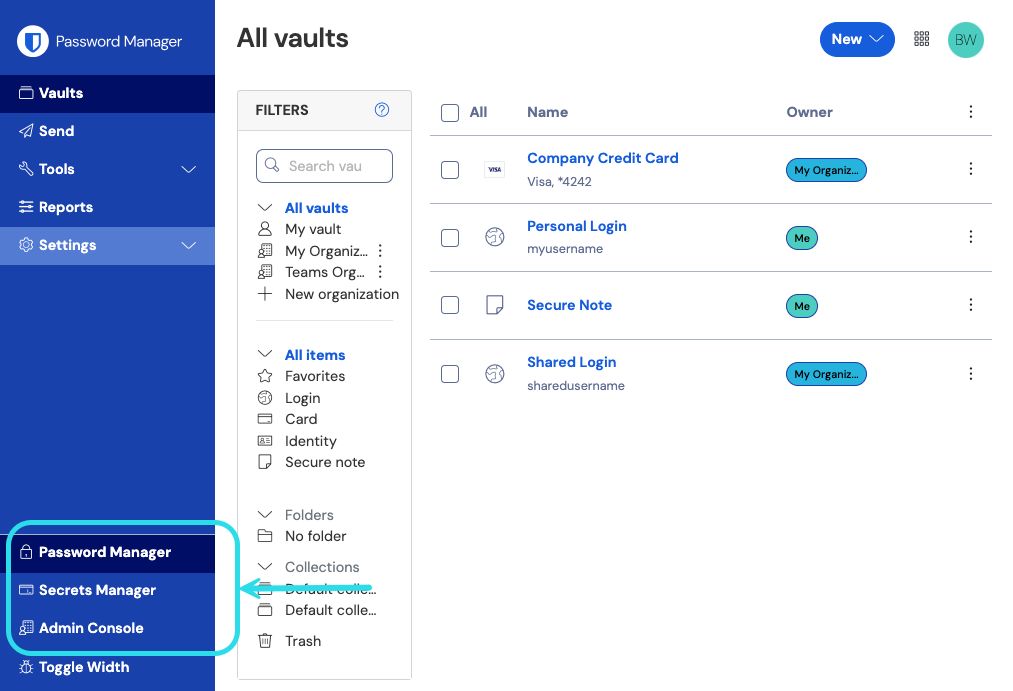Export Vault Data
You can export your individual vault data from any Bitwarden app, or export organization vault data from the web app or CLI. Exporting your vault data and storing it in a secure location is a great way of keeping a backup of your most important information, or to kickstart migration to a new Bitwarden account. Vault data is decrypted locally by the client before export, meaning no unencrypted data is transported over the internet when you create an export.
tip
You don't need to make an export if you're adding Bitwarden to another device! If your account is hosted on our cloud servers, your data is stored securely and encrypted, all you need to do is download Bitwarden on your new device and log in with your existing account.
Exports can be downloaded as plaintext .json or .csv files, as a .json encrypted export, or as a .zip that includes a .json export and all your attachments. .zip exports are currently only available for individual vault data.
We recommend using one of the .json options for a more complete export, as .csv files won't currently export cards or identities, and only .json exports include stored passkeys. No export formats include items in the trash or Sends.
For complete information on the format of Bitwarden .csv and .json files, see condition a Bitwarden .csv or .json.
warning
Unless you are using an encrypted export, do not store or send the exported file over insecure channels, like email, and delete the file immediately after use.
Export an individual vault
warning
Exporting your individual data will not export any data owned by an organization that you belong to. To export organization data, follow these instructions.
To export your individual vault data from the web app:
In the Bitwarden web app, select Tools → Export vault from the navigation:

Export individual vault Choose a location to Export from and a File Format (
.json,.csv,.json (Encrypted), or.zip (with attachments)). Only collections for which you have Can manage permission will be exported if you select an organization from the Export from dropdown.If you selected
.json (Encrypted), choose the Export type that you would like for the encrypted export:Account restricted: This file can only be imported to the current Bitwarden account that generated the encrypted export file.
Password protected: This file can be imported to any Bitwarden account by utilizing the password set during the encrypted export process.
tip
You can select to securely generate a unique password for this export. If you do, be sure to save that password in a safe place.
Select Confirm format and select the Export vault button to finish. You will need to confirm your permission to do this using your master password or an email verification code.
Your export file will be sent to your Downloads folder or wherever your web browser is set to download files to.
For a complete list of all the items and fields included in an individual vault export, see this JSON sample.
Export an organization vault
Organization members can export data from any collection for which they have Can manage permission by following the above instructions and choosing the organization from the Export from dropdown.
Admins, owners, and custom role users with the Access import/export can export all organization data using the following instructions:
To export your organization data from the web app:
Open the Admin Console using the product switcher:

Product switcher Select Export → Export vault from the navigation:

Export organization vault On the vault export page, choose a File format (
.json,.csv, or.json (Encrypted)) and select the Confirm format button.Enter your master password and select the Export vault button.
note
Exporting an organization's vault data will be captured by event logs. Learn more.
For a complete list of all the items and fields included in an organizations vault export, see this JSON sample.

